Modelling
Graphics
Bangor University

Jonathan C. Roberts is a Professor in the School of Computer Science, Bangor University. Jonathan’s principal research interests lie in the field of Information Visualization and Visual Analytics. He is particularly interested in exploratory visualization techniques, the use of “multiple coordinated views”, analysis of Big Data and complex multivariate data, and how different sensory modalities can be used to display and interact with information (e.g., tangible, touch and interactive data visualization). He collaborates with researchers from several domains including: language interpreters, climate scientists, social scientists, ocean scientists, and heritage and archaeologists
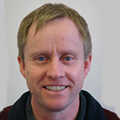
Bill Teahan leads research activities in Artificial Intelligence and Intelligent Agents. In the graphics and visualisation area, his interests include the creation of virtual environments, and the design and implementation of intelligent agents to sense and interact within them.

Ik Soo Lim is a Lectuer in the School of Computer Science, Bangor University. Ik Soo has research interest mainly in data modeling and visualization based on analytic approaches such as Radial Basis Functions. Current research projects include clustering-based representation of surface or volume data, smoothing of irregularly sampled data, interpolating implicit surface modelling for vascular structure, learning-based segmentation of medical images.

Franck P. Vidal’s main research interests are in modelling and simulating complex and computationally intensive phenomena in medical physics (e.g. photon transport in radiology and radiotherapy), medical imaging (inc. tomographic reconstruction and volume segmentation) and medical graphics. In particular, he is investigating the use of advance visualization methods, programming massively parallel processors, artificial evolution and haptics.

Llŷr is a Lecturer in the School of Computer Science, Bangor University. Llŷr obtained a BSc in Computer Science and a PhD in the field of Behavioural Animation and Artificial Life. His research focuses on enhancing the realtime behaviour, animation and adaptability of virtual creatures when placed in an arbitrary virtual environment. His immediate research concerns the dynamic animation of unrestricted surface movement in spiders, insects and lizards. Possible applications include entertainment media, phobia therapy and artificial life research.

Panagiotis (Panos) is a Lecturer in the School of Computer Science, Bangor University. Panos has an MEng in Electronic Systems Engineering and a PhD on Wearable Computing for Augmented Reality, both from the University of Essex. His research expertise lies mainly on Mixed and Virtual Reality, Information Visualization, Visual Analytics and Wearable Computing. He is currently investigating beyond-the-desktop visualization. His personal page can be found on http://pdritsos.com/.
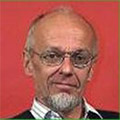
Tim Porter is an Emeritus Professor with the School of Computer Science. A mathematician, his research interests within the visualization area are in the use of Morse Theoretic frameworks for studying evolving images, and in developing a new area of Topological Data Analysis. This uses methods from sampling of very large data sets (typically coming from medical, GIS systems or from numerical simulations of non-linear models of phenomena) and attempting to extract significant topological data from them.
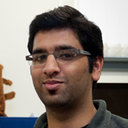
Nirwan Sharma is a Research Officer in Human-Computer Interaction and Visualization at the School of Computer Science, Bangor University, U.K, and a PhD student in Computing Science at the University of Aberdeen, UK. He holds a Masters Degree in Interactive Systems Design from the University of Nottingham, UK and Bachelors of Technology in Computer Science and Engineering from Shri Mata Vaishno Devi University, India. He has research interests in Citizen Science and Human-Computer Interaction.

Soon…
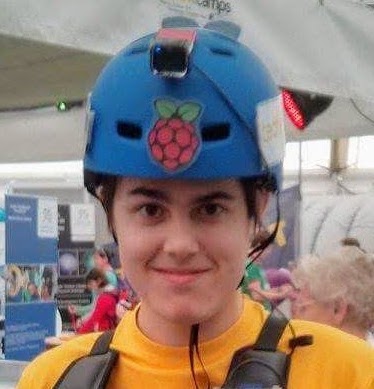
Soon…

Soon…

Soon…

Soon…

Thomas Varsamidis was a lecturer in the group. His research interests included visualization of wind effects on liquid surfaces and surface construction techniques from digital elevation data. Thomas now lives and works in Athens, Greece.
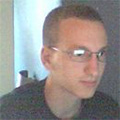
Rhys Thomas obtained a BSc in Computer Science at Bangor in 2005 and subsequently studied for a PhD funded by the EPSRC. His main area of research is based around Augmented Reality (AR) as a tool for anatomy education. In July 2009, Rhys took up a research fellowship at Leeds University to work on a virtual reality microscope for diagnostic pathology.

Oli Buckley is a Lecturer at Crandfield University. Oli carried out research in Soft/Deformable Object Modelling, and more specifically within a medical environment. The main focus of his work is centred on soft tissue modelling and needle puncture, ultimately for use in training simulators for interventional radiology. Oli holds a BSc Computer Science from the University of Liverpool. In November 2007 he took up a KTP Post with Oxford Brookes University and Nominet.

Ade Fewings followed up his first degree at Bangor University, with a PhD in the HPV-MG group. His work has been in the area of visualization within distributed systems, particularly involving Grid and parallel graphics technologies, and has been presented at the Eurographics and SuperComputing conferences. Ade worked as a visualization engineer at Technium CAST and currently works for HPC Wales.
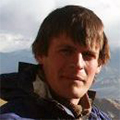
Tim Coles graduated with a BSc and MSc in Computer Science from Bangor University. He then obtained his PhD in 2011 from Bangor as a result of research into the use of augmented reality and haptics devices in training surgery procedures. Tim was seconded to the Italian Institute of Technology (ITT) in Genoa during his PhD. He is currently working as a postdoc at CSIRO in Australia.
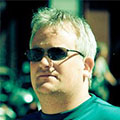
Chris Hughes is a Lecturer at University of Salford. Chris completed his BSc in Computer Science in 2003. and obtained a PhD funded by the EPSRC as part of the e-Viz group in 2008. The main area of this research has been based around Augmented Reality (AR) and investigating the use of AR as an interface for Transcranial Magnetic Stimulation (TMS). This work forms part of an exemplar application which will use the e-Viz framework to utilize high performance computers as a backend for rendering the AR graphics over the grid. In 2006, Chris was appointed to be a Research Officer in a EPSRC funded project to develop a physics based simulator for vascular interventional radiology procedures. He was working for the Advanced Medical Imaging and Visualization Unit. He left to work for BBC Research and Development at Salford Quays, Manchester.

David Meirion Hughes was employed as a RIVIC Research Officer. He has an MSc in Computer Science from Bangor University and completed his PhD on novel approaches for faster raytracing of isosurfaces on GPUs. He is also interested in surface representation using Radial Basis Functions (RBF), and surface reconstruction of scattered-data using multi-layer compactly supported RBFs. Meirion took up a new post in industry in August 2012.

Gary Hung completed a BSc in Computer Science at Bangor University in 2010 and a PhD for his research “Investigating the Feasibility of Using Focussed Airborne Ultrasound as Tactile Feedback in Medical Simulators” in 2014. His PhD included the building of a novel tactile device called UltraSendo that has been used to mimic pulse and thrill sensations in a virtual patient. He subsequently completed a short post doctoral research position to investigate open source methods for visualising large datasets. He is interested in Haptic technologies and Graphics. Gary now works as a Design Engineer at Magstim Ltd in Whitland, focussing on Transcranial Magnetic Stimulation.
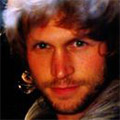
Liam Kurmos is currently working on a HEA funded project on ‘Optimal view angle selection for time-varying volume data’. More broadly he is interested in identifying topological structure in volume datasets, and plans to incorporate into his PhD research: computational topology, AI, SVMs, and level set segmentation. He has a master’s in theoretical Physics and has a long standing interest in modelling and simulation of physical processes.
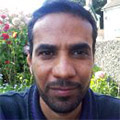
Safa A. Najim completed a BSc and MSc at the Computer Science Department at Basrah University (Iraq). Safa has now completed his PhD at Bangor University. His main area of research is based around a reduction method to visualize complex systems. His interests include Graphics Processing Units (GPU) applications and software engineering.

Yoann Pavia received a master’s degree in medical physics from Université Claude Bernard Lyon 1 (France) and in biomedical engineering from Université de Franche-Comté (Besançon, France). He joined Bangor University in October 2012 until July 2013, and was also a member of the Visualization and Medical Graphics (VMG) Group and of the Research Institute of Visual Computing (RIVIC). His main research interests are computational medical physics for radiotherapy.

Josselin Petit has a PhD in Computer Science for the University of Lyon, France. He worked on a real-time high dynamic range rendering of virtual environments, with an application in the driving simulation, and on subjective and objective image quality assessment. Employed at Bangor as a Research Officer, he worked on HDR imaging and rendering, on image perception and image quality assessment. Joss now works as Application Engineer at Optis UK, at the Virtual Engineering Centre based at the Daresbury Science & Innovation Campus.

Rick Walker has a PhD from the University of Kent, where he worked on visualization-driven computational steering of computational fluid dynamics systems in astrophysics. Employed at Bangor as a RIVIC Research Officer, his research interests include visual supercomputing, information visualization and visual analytics. Rick left Bangor in July 2012 to take up a post at Middlesex University.
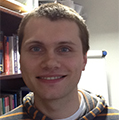
Robert Wanat received his MSc in Computer Science from West Pomeranian University of Technology in Szczecin, Poland and is now a PhD student on a Bangor University Anniversary Research Scholarship. Robert’s interests include high dynamic range (HDR) imaging with a focus on HDR displays, colour perception across a wide range of viewing conditions, human visual system modelling and image appearance. The main goal of his studies is the development of advanced imaging methods that could be used to imitate the appearance of real-life scenes on a computer screen. He completed his PhD in 2015 and is currently working in California.

Seran Pop is a Lecturer in the Department of Computer Science of the university of Chester. Serban joined the group as a Welsh Institute of Mathematics and Computational Science (WIMCS) Research Fellow in August 2007. Pop was formerly a esearch Fellow at the School of Mathematical Sciences, Centre for Mathematical Medicine, University of Nottingham where his main research topic was angiogenesis in wound healing, blood rheology and microcirculation of blood. At Bangor Serban was a Research Officer for the Advanced Medical Imaging and Visualization Unit. Serban became a lecturer at the School of Mathematics at Oxford Brookes University, and in 2015 joined the University of Chester as a senior lecturer.
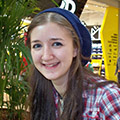
Dr Helen Miles is a Teaching Fellow, in the Department of Computer Science of Aberystwyth University. Helen completed a BSc in Computer Science at Bangor University in 2010, and submitted her PhD thesis “An Advanced Virtual Environment for Rugby Skills Training” in January 2014. Her PhD research was funded by a KESS scholarship and has been a collaboration between the Schools of Computer Science, Psychology, Sports Science and Rugbi Innovations Ltd. Her interests include animation in the film and gaming industries, and virtual environments, particularly for learning purposes.

Richard George completed a BSc in Ocean Sciences and Computing, followed by an MSc in Advanced Visualisation at Bangor University. Richard completed his PhD under supervision of Dr Roberts, where he investigated oceanographic visualization especially on the coastal domain in collaboration with the School of Ocean Sciences. Richard worked as a research associate on the UK-Visual Analytics Consortium project looking at Big Data visualization, completing this project in December 2013.
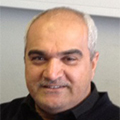
Haider Easa completed his BSc and MSc degrees in computer science, at the university of Mosul, Iraq. His interests include digital image processing, visualization and human visual perception. His PhD work involved determining an optimum approach to increase the perception of depth.
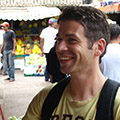
Marc Edwards was a Research Officer for the Advanced Medical Imaging and Visualization unit. He has a passion for Computer Science and is interested in biological animation and modeling, computer vision, image analysis and programming microcontrollers. Marc has a PhD in Crystal Engineering from Cambridge University and an MPhil from Keele University in Analytical Chemistry.

Peter’s primary interests are in designing and building advanced display systems that include high dynamic range, 3D stereo, motion parallax, and focal cues. Such displays can be used for extremely realistic simulations of shapes and materials in human visual perception research. Peter obtained his PhD in Computer Science from the University of Leuven (Belgium) working on the perception of realistically rendered materials. He has since worked on immersive displays at Inria (France) and high dynamic range displays at the Max Planck Institute for Informatics (Germany).
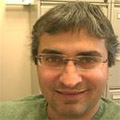
Francesco works as a Radiotherapy Physicist at the North Wales Cancer Treatment Centre (Betsi Cadwaladr University Health Board). His basic education is in Theoretical Physics (MPhys (Hons), Pisa University). He holds the following degrees: MSc in Optics (Florence University), MSc in Mathematical Logic and Computer Science (Siena University), PGD in Control Engineering (Coventry University), MSc in Medical and Radiation Physics (University of Birmingham). In November 2010 Francesco started a part-time PhD where his research focuses on Volume and Surface Dose Visualization.
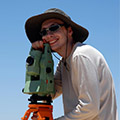
Andrew obtained a MSc in Computer Applied Archaeology from the University of Southampton and completed a PhD at the University of Liverpool, on Hybrid Approaches to Visual Landscapes. His research interests include virtual reconstructions of archaeological remains and visual impact studies of cultural heritage sites. He is now employed as a Research Officer on a AHRC funded project, which will used archived materials to produce three-dimensional models of lost archaeological sites in Gwynedd.
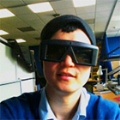
Dr Ding has over 10 years R&D experience in medical image computing in both industry and academics. Dr Ding worked as a senior research engineer on state-of-the-art medical imaging algorithms for Toshiba medical system corporation. Dr Ding is now based at Bangor University working for the ‘RASimAs’ project (Regional Anaesthesia Simulator and Assistant), a European research project funded by the European Union’s 7th Framework Program. It aims to provide a virtual reality simulator and assistant to doctors performing regional anaesthesia by developing the patient-specific Virtual Physiological Human models.
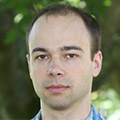
Rafal Mantiuk is a Senior Lecturer in University of Cambridge. Rafal’s primary interests are in modelling certain aspects of the human visual system in order to apply these models in computer graphics applications. He investigates the potential of new display technologies, including high dynamic range (high contrast), ultra-low black level, wide colour gamut, high spatial and temporal resolution, to deliver the imagery that fully utilizes the capabilities of the human eye . His interests encompass human visual perception, advanced image processing, image reconstruction, video compression, subjective and objective image quality assessment.

Professor Nigel W. John is a Senior Research Professor in the Department of Computer Science of the University of Chester since July 2015. Previously, he held a chair in computing within the School of Computer Science at Bangor University between 2003 and 2015, and led the VMG group. In 2006 he was awarded the 12th annual Satava Award to acknowledge his accomplishments in the field of computer graphics and medical visualization. In 2009 he was elected as a Fellow of the Eurographics Association and in 2014 as a Fellow of the Learned Society of Wales. His personal page can be found on http://nigeljohn.org/.
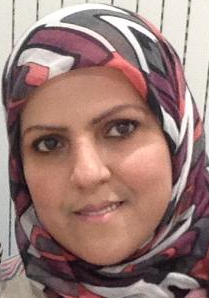
Zainab completed her BSc and MSc degree in computer science, at the University of Basra, Iraq, where she also worked as as a lecturer. She is now a PhD student at Bangor University. Zainab PhD research is based on computer vision, software engineering, digital image processing, evolutionary algorithm, computer graphics, Graphic Processing Unites (GPU) programming languages.
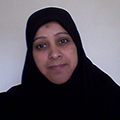
Hanan Ramadhan Alnjar completed a BSc and a Masters in Computer Science at University of Basrah, Iraq. Hanan is now studying for a PhD in the area of data visualization at Bangor University.